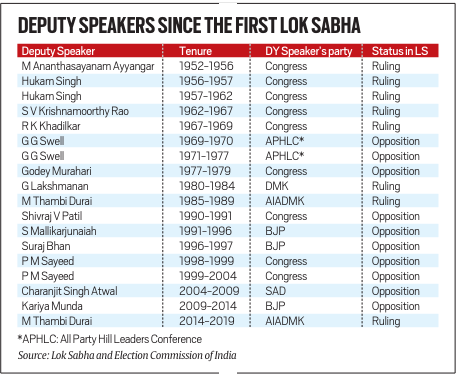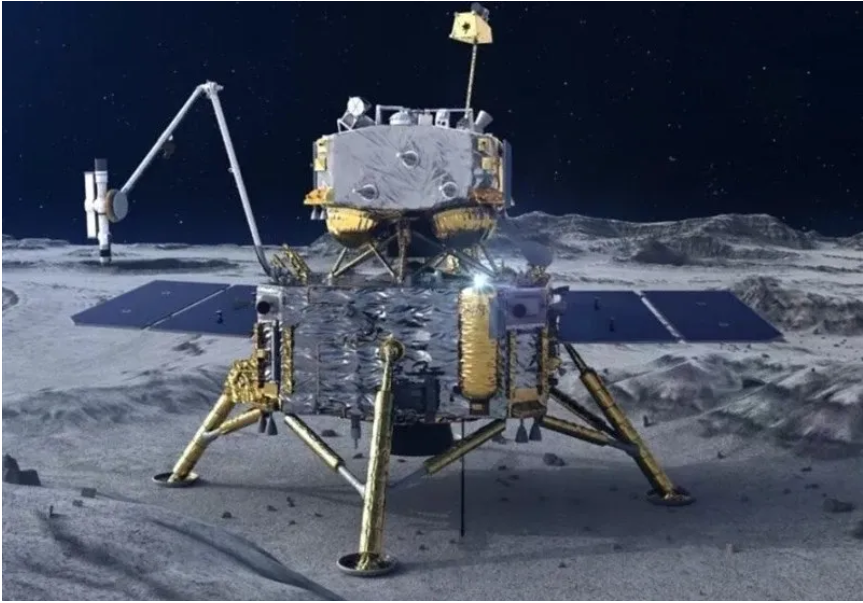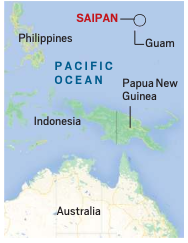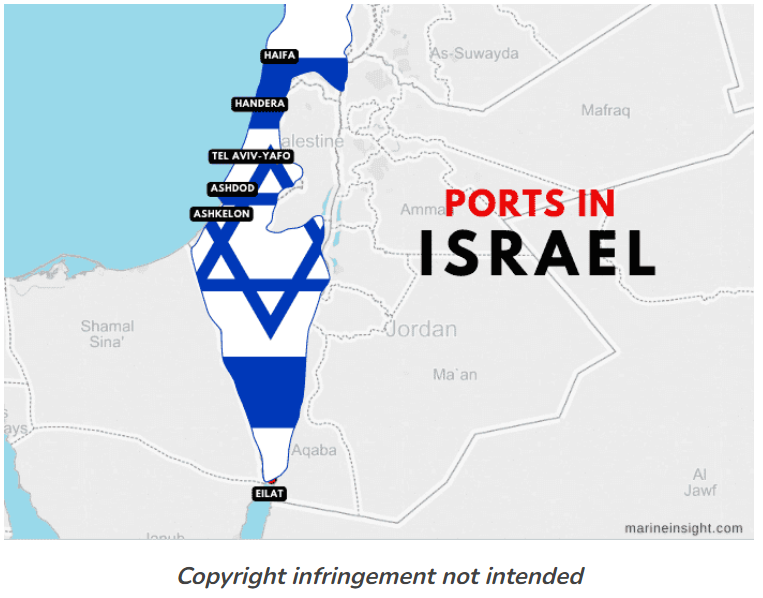26 June 2024 : Daily Current Affairs
1. Opposition Pushes for Deputy Speaker Post Amid Strengthened Position in Lok Sabha
- 1. Opposition Pushes for Deputy Speaker Post Amid Strengthened Position in Lok Sabha
- 2. Chang’e-6: China’s Historic Mission Returns First Samples from Moon’s Far Side
- 3. After 20 years of resistance to reservation of seats for women, Nagaland to vote in civic polls today
- 4. Cost of future wars is enormous, resources should be optimised: Chief of Defence Staff
- 5. Analysing Maharashtra’s water crisis
- 6. Denmark to Implement World’s First Livestock Emissions Tax to Combat Climate Change
- PRELIMS FACTS
- 1.Julian Assange to End Legal Battle with Plea Deal in Saipan Court
- 2. Nearly Half of Indian Adults Physically Inactive: WHO Guidelines Unmet, Lancet Study Reveals
- 3. Ahead of roll-out of the new criminal laws, Union Home Ministry tests eSakhsya App
- 4. India’s external debt rises $39.7 bn YoY to $663.8 bn: RBI data
- 5. Iranian-Backed Militant Group Claims Attack on Eilat as US Military Reopens Gaza Aid Pier Amid Regional Tensions
(Source: Indian Express; Section: Explained; Page: 14)
| Topic: GS2 – Polity |
| Context: |
|
Analysis of News:

Constitutional Provisions for Deputy Speaker
- Article 95(1) of the Indian Constitution states that the Deputy Speaker performs the Speaker’s duties if the position is vacant and holds the same general powers when presiding over the House.
- Both the Speaker and Deputy Speaker must be appointed “as soon as may be” after the House is constituted, as per Article 93.
- However, the Constitution does not specify a strict timeline for these appointments, allowing for potential delays.
- Despite this, the mandatory nature of these roles is underscored by the use of “shall” in the articles, implying an urgency in their election.
Election Rules and Historical Context:
- The election of the Speaker typically occurs in the first session of the new Lok Sabha, usually on the third day following the oath-taking sessions.
- The Deputy Speaker’s election often takes place in the second session, although there is no restriction against holding it in the first session.
- Rule 8 of the Rules of Procedure and Conduct of Business in Lok Sabha governs this election, which proceeds once a motion proposing a candidate’s name is carried.
- The Deputy Speaker remains in office until the House is dissolved, and they can resign or be removed by a resolution passed by a majority of the House members.
Deputy Speaker’s Role in Absence of Speaker:
- Historically, the Deputy Speaker has filled in for the Speaker during vacancies.
- For example, after the death of Speaker G V Mavalankar in 1956, Deputy Speaker M Ananthasayanam Ayyangar assumed the role until the end of the Lok Sabha’s term.
- Similarly, after Speaker GMC Balayogi’s death in 2002, Deputy Speaker P M Sayeed served as acting Speaker until a new Speaker was elected.
Opposition’s Historical Hold on Deputy Speaker Post:
- The post of Deputy Speaker has frequently been held by members of the Opposition, especially during Congress-led UPA governments.
- For instance, during UPA-I (2004-09) and UPA-II (2009-14), the position was held by Charanjit Singh Atwal of the Shiromani Akali Dal and Kariya Munda of the BJP, respectively.
- During Atal Bihari Vajpayee’s tenure as Prime Minister (1999-2004), P M Sayeed of the Congress served as Deputy Speaker.
- This pattern of Opposition members holding the Deputy Speaker position underscores its role as a critical element of parliamentary democracy, ensuring a balance of power and representation.
Conclusion:
- The election and appointment of the Deputy Speaker in Lok Sabha are vital for the functioning and balance of parliamentary proceedings.
- The Opposition’s recent push for this post, backed by constitutional provisions and historical precedence, highlights the ongoing dynamics and negotiations within India’s legislative framework.
| Significance of Deputy Speaker of Lok Sabha |
|
|
PYQ: Consider the following statements: (2017) 1) In the election for Lok Sabha or State Assembly, the winning candidate must get at least 50 percent of the votes polled, to be declared elected. 2) According to the provisions laid down in the Constitution of India, in Lok Sabha, the Speaker’s post goes to the majority party and the Deputy Speaker’s to the Opposition. Which of the statements given above is/are correct? (a) 1 only (b) 2 only (c) Both 1 and 2 (d) Neither 1 nor 2 Ans: (d) |
| Practice Question: Discuss the constitutional provisions and significance of the Deputy Speaker in the Lok Sabha. Analyze the historical trends of appointing the Deputy Speaker and the current challenges faced in ensuring this position is filled promptly. (250 words/15 m) |
2. Chang’e-6: China’s Historic Mission Returns First Samples from Moon’s Far Side
(Source: Indian Express; Section: Explained; Page: 14)
| Topic: GS3 – Science and Technology – Space |
| Context: |
|
Analysis of News:

Historical Context of Lunar Sample Return Missions
- The Chang’e-6 mission is not the first time a spacecraft has brought lunar samples to Earth. In July 1969, the US Apollo 11 mission brought 22 kg of lunar material to Earth.
- The Soviet Luna 16 mission in September 1970 also brought lunar samples back. In recent years, Chang’e-5 brought back 2 kg of lunar soil in December 2020.
- However, all these samples were from the near side of the Moon. The far side, with its difficult terrain and giant craters, posed significant challenges for landing and communication.
- Chang’e-4 overcame these difficulties in 2019, placing the Yutu-2 rover on the far lunar surface.
- Chang’e-6 has now advanced further by not only landing on the far side but also returning with samples.
Significance of Sample Return Missions
- Sample return missions like Chang’e-6 aim to collect and return extraterrestrial samples to Earth for detailed analysis.
- While in situ robotic explorations can perform certain experiments, they are limited by the miniature and less sophisticated instruments they carry.
- Returned samples, however, can be examined using highly sensitive laboratory instruments, allowing scientists to study their chemical, isotopic, mineralogical, structural, and physical properties in great detail.
- These samples can be preserved for decades, enabling future generations to examine them with advanced technology.
- The lunar samples brought back by the Apollo missions in the 1960s and 1970s are still being studied today, providing valuable insights into the history of the Moon, Earth, and the inner solar system.
Potential Discoveries from Chang’e-6 Samples:
- The far side of the Moon is geologically different from the near side, with a thicker crust, more craters, and fewer plains. Scientists are keen to understand why these differences exist, and the Chang’e-6 samples could provide some answers.
- Samples from the SPA basin can also reveal information about the timeframe of lunar cratering. The collision that created the basin may have excavated material from the Moon’s lower crust and upper mantle, offering insights into the Moon’s history and origins.
- Additionally, these samples could suggest ways to use lunar resources for future exploration, such as producing bricks for building lunar bases through 3D printing.
- Scientists are also interested in the potential presence of ice at the Moon’s poles, which could be harvested for water, oxygen, and hydrogen — essential resources for sustaining human presence and for use as rocket propellant.
The New Race to the Moon:
- In 2023, countries like India, China, Japan, the US, and Russia launched lunar missions, with over 100 Moon missions expected by 2030 from both governments and private companies.
- Countries such as China and the US aim to put astronauts on the Moon by 2030. The success of Chang’e-6 is seen as a significant step towards this goal for China.
- Unlike the 20th-century US-USSR space race, today’s lunar missions focus on exploring ways to establish a long-term presence on the Moon and utilize its resources. The Moon is also seen as a potential launch pad for deeper space exploration and missions to other celestial bodies.
| Practice Question: Discuss the significance of China’s Chang’e-6 mission in the context of lunar exploration. How do sample return missions contribute to our understanding of the Moon, and what potential advancements could arise from analyzing samples from the Moon’s far side? Consider the broader implications for future space exploration and international cooperation. (250 words/15 m) |
3. After 20 years of resistance to reservation of seats for women, Nagaland to vote in civic polls today
(Source – The Hindu, International Edition – Page No. – 4)
| Topic: GS2 – Indian Polity |
| Context |
|
Analysis of the news:
- Nagaland will hold urban local body (ULB) elections on Wednesday after a 20-year hiatus, with 33% reservation for women for the first time.
- Elections will be conducted in 10 out of 16 districts; six eastern districts under the influence of the Eastern Nagaland People’s Organisation (ENPO) are not participating.
- Nagaland has three municipal councils (Dimapur, Kohima, Mokokchung) and 36 town councils, with reserved seats for women in various wards.
- The Nagaland Municipal and Town Council Act was amended in 2006 to include a 33% reservation for women.
- Attempts to hold ULB polls with a women’s quota since 2004 faced resistance, leading to violent protests in 2017.
- The Nagaland Municipal Act of 2023 was passed on November 9, following which the Supreme Court mandated completion of ULB elections by April.
- The elections are seen as historic following the election of Nagaland’s first woman Rajya Sabha member in 2022 and two women MLAs in 2023.
| Reasons for the Resistance And Supreme Court Directive: |
|
| PYQ: The reservation of seats for women in the insStuSons of local self- government has had a limited impact on the patriarchal character of the Indian Political Process.” Comment. (250 words/15m) (UPSC CSE (M) GS-2 2019) |
| Practice Question: Discuss the constitutional and socio-cultural challenges faced by Nagaland in implementing 33% reservation for women in urban local body elections. Analyse the Supreme Court’s directive in this context and its implications on local governance and autonomy in the state. (150 Words /10 marks) |
4. Cost of future wars is enormous, resources should be optimised: Chief of Defence Staff
(Source – The Hindu, International Edition – Page No. – 4)
| Topic: GS3 – Internal Security |
| Context |
|
Analysis of the news:
- General Anil Chauhan highlighted the potential enormous cost of future wars and emphasised the need to optimise resources and manpower for affordability of advanced weapons and systems.
- Service Integration: He stressed the importance of integrating operations within the Army, Navy, and Air Force to optimize time, resources, processes, infrastructure, and manpower.
- WASP Program: The Warfare & Aerospace Strategy Program (WASP), initiated in 2022, focuses on geopolitics, grand strategy, and national power, educating military professionals.
- General Chauhan proposed extending integration efforts to include the Navy, Coast Guard, and Central Armed Police Forces for logistics and infrastructure.
- General Anil Chauhan suggested exploring alternative methods to reduce costs, considering civil aviation’s potential military applications.
- IAF Chief’s Perspective: Air Chief Marshal V. R. Chaudhari highlighted the evolution of scholar warriors who blend intellectual capability with combat skills in India’s strategic culture emphasising autonomy and territorial integrity.
| Practice Question: Discuss the significance of integrating operations within the Indian Armed Forces for optimising resources and enhancing combat effectiveness. How can initiatives like the Warfare & Aerospace Strategy Program (WASP) contribute to India’s strategic readiness in the evolving geopolitical landscape? (250 Words /15 marks) |
5. Analysing Maharashtra’s water crisis
(Source – The Hindu, International Edition – Page No. – 10)
| Topic: GS3 – Environment |
| Context |
|
Overview of Marathwada’s Water Crisis
- Marathwada, located in the rain-shadow region of the Western Ghats, faces stark contrasts in rainfall distribution due to the rain-shadow effect.
- While the western side receives heavy rainfall (2,000-4,000 mm), Marathwada endures significantly lower precipitation (600-800 mm), leading to frequent droughts and water scarcity issues.
- A study by IIT Gandhinagar highlighted worsening conditions attributed to climate change, increasing the severity and frequency of droughts in central Maharashtra, making Marathwada one of the driest regions in India after Rajasthan.
Impact on Agriculture
- Sugarcane Dominance and Water Use: Agricultural practices in Marathwada, particularly the cultivation of sugarcane, exacerbate the water crisis. Sugarcane requires substantial irrigation (1,500-2,500 mm annually) compared to other crops like pulses and millets. Despite recommendations against sugarcane cultivation in low-rainfall areas, it occupies 4% of the region’s cropped area and consumes 61% of irrigation water.
- Government Policy Influence: Long-standing government support for sugarcane pricing has expanded cultivation, leading to reduced river outflows and restricted irrigation for more sustainable crops.
Role of Soil and Topography
- Clayey Black Soil Characteristics: Marathwada’s predominant clayey black soil, known as “regur,” retains moisture effectively but has poor infiltration rates. This soil type contributes to high runoff during rainfall, reducing groundwater recharge and exacerbating water scarcity.
- Impact of Dam Construction: Maharashtra leads in large dam construction (1,845 dams), aimed at capturing runoff. However, the soil’s low hydraulic conductivity hampers effective water percolation, contributing to crop losses and inefficient water use.
Regional Water Variability
- Groundwater Dynamics: Marathwada’s water scarcity varies within its geography. The region features parallel tributaries of the Godavari and Krishna rivers, where valleys hold perennial groundwater while uplands rely on seasonal groundwater. This natural imbalance exacerbates water scarcity in upland areas post-monsoon.
- Challenges and Solutions: Addressing water scarcity requires tailored solutions, including watershed management practices like contour trenches and earthen bunds to conserve water and prevent soil erosion. Silt-trapping mechanisms in agricultural fields under the Mahatma Gandhi National Rural Employment Guarantee Scheme could enhance water retention.
Strategies for Water Resilience
- Supply-side Interventions: Enhancing watershed management and promoting water-conserving structures are critical to maximising available resources and mitigating runoff.
- Demand-side Management: Promoting water-efficient irrigation practices, cultivating drought-resistant crops, and diversifying livelihoods away from water-intensive crops like sugarcane are essential steps.
- Policy Recommendations: Shifting sugarcane cultivation to regions with higher rainfall and promoting alternative high-value, low-water-use crops can alleviate pressure on Marathwada’s water resources and enhance agricultural resilience.
| PYQ: What is water stress? How and why does it differ regionally in India? (250 words/15m) (UPSC CSE (M) GS-1 2019) |
| Practice Question: Discuss the challenges faced by Maharashtra’s Marathwada region in water management, particularly in light of sugarcane cultivation and geographical factors. Suggest measures to enhance water resilience in the region. (150 Words /10 marks) |
6. Denmark to Implement World’s First Livestock Emissions Tax to Combat Climate Change
(Source: Indian Express; Section: The World)
|
Topic: GS3 – Environment – Environment Pollution and Degradation |
|
Context: |
|
Analysis of News
Goals and Tax Structure:
- The Danish government aims to reduce greenhouse gas emissions by 70% from 1990 levels by 2030.
- Taxation Minister Jeppe Bruus announced that Danish livestock farmers will be taxed 300 kroner ($43) per ton of carbon dioxide equivalent in 2030, with the tax increasing to 750 kroner ($108) by 2035.
- However, an income tax deduction of 60% will reduce the actual cost per ton to 120 kroner ($17.3) initially, rising to 300 kroner by 2035. This tax is part of Denmark’s broader strategy to become climate neutral by 2045.
Methane Emissions and Climate Impact
- Methane emissions have been increasing rapidly since 2020, with livestock accounting for about 32% of human-caused methane emissions, according to the U.N. Environment Program.
- Besides livestock, methane is emitted from landfills, oil and natural gas systems.
- The tax on livestock emissions aims to curb this trend, as methane’s significant heat-trapping ability makes it a critical focus for reducing global warming.
Legislative and International Context:
- Denmark’s decision to implement this tax follows a period of widespread protests by farmers across Europe against climate change measures that they argue threaten their livelihoods.
- Despite the backlash, Denmark reached a compromise agreement involving the center-right government, farmers, industry representatives, and unions.
- The agreement is expected to pass in Denmark’s 179-seat parliament due to the broad consensus achieved.
Comparison with New Zealand and Broader Implications:
- Denmark’s move contrasts with New Zealand, which had planned to introduce a similar law in 2025 but recently withdrew the legislation following strong opposition from farmers.
- Instead, New Zealand will explore alternative methods to reduce methane emissions.
- Denmark’s tax, described as a “historic compromise” by the Danish Society for Nature Conservation, is seen as laying the groundwork for a restructured food industry beyond 2030.
Impact on Denmark’s Agricultural Sector:
- Denmark, a major exporter of dairy and pork, will tax emissions from both cows and pigs, though cows produce significantly higher emissions.
- As of June 2022, Denmark had approximately 1.48 million cows. The introduction of the tax represents a significant shift for the Danish agricultural sector, which will need to adapt to new economic and environmental realities.
Conclusion:
- Denmark’s pioneering livestock emissions tax represents a bold step towards achieving climate neutrality by 2045.
- It sets a precedent that may influence other countries to follow suit in addressing agricultural methane emissions.
- The tax aims to balance environmental goals with economic realities, striving for a sustainable future in the face of global climate challenges.
|
Practice Question: Discuss the implications of Denmark’s decision to implement a tax on livestock emissions as a strategy to combat climate change. How can this approach influence global agricultural practices and policies aimed at reducing greenhouse gas emissions? Evaluate the potential challenges and benefits of such a policy. (250 words/15 m) |
PRELIMS FACTS
1.Julian Assange to End Legal Battle with Plea Deal in Saipan Court
(Source: Indian Express; Section: Explained; Page: 14)
| Context: |
|
Analysis of News:

Where is Saipan?
- Saipan is the capital of the Northern Mariana Islands (NMI), a US commonwealth in the western Pacific, which begins roughly 70 km north of Guam and stretches across 14 islands.
- Like territories such as Guam or Puerto Rico, the Northern Mariana Islands are part of the US without the full status of a state.
- The roughly 51,000 residents are US citizens but cannot vote in presidential elections. Crucially, some, like Saipan, also host US district courts.
- The US took control of Saipan during World War II, and after decades under US control, residents in 1975 voted to join the US as a territory.
- The territory has a permanent delegate in the US House of Representatives. Tourism is the mainstay of Saipan’s economy, with the island and its surroundings dotted with World War II memorials and wrecks popular with divers.
- Saipan, home to most of the Northern Mariana’s residents, is popular with Korean and Chinese tourists and is the only part of the US that Chinese citizens can enter without a visa.
- This unique status has political opponents worry about the risk of espionage by Chinese nationals.
Why is Assange Heading There?
- US prosecutors said Assange wanted to go to a court close to his home in Australia and not in the continental United States.
- Saipan has the advantage of being relatively close to Assange’s home — it is roughly 3,000 km away, whereas Hawaii is more than twice as far.
2. Nearly Half of Indian Adults Physically Inactive: WHO Guidelines Unmet, Lancet Study Reveals
(Source: Indian Express; Section: Express Network; Page: 09)
| Context: |
|
Analysis of News:
WHO Guidelines and Health Risks:
- The WHO recommends at least 150 to 300 minutes of moderate aerobic activity per week, or an equivalent amount of vigorous activity, for all adults. Insufficient physical activity is defined as not meeting this threshold.
- Lack of physical activity increases the risk of cardiovascular diseases such as heart attacks and strokes, Type 2 diabetes, dementia, and cancers of the breast and colon.
- Experts at WHO, highlights a worrying trend of increasing physical inactivity among adults, which has risen by about five percentage points between 2010 and 2022.
Regional Variations and Concerns in India:
- The highest rates of physical inactivity were observed in the high-income Asia-Pacific region (48%) and South Asia (45%).
- Other regions showed varied rates, ranging from 28% in high-income Western countries to 14% in Oceania.
- This is particularly concerning for India, where people are genetically more prone to developing non-communicable diseases such as heart problems and diabetes at least a decade earlier than others.
About WHO:
- World Health Organization (WHO), the United Nations’ specialized agency for Health was founded in 1948.
- Its headquarters are situated in Geneva, Switzerland.
- There are 194 Member States, 150 country offices, six regional offices.
- It is an inter-governmental organization and works in collaboration with its member states usually through the Ministries of Health.
- The WHO provides leadership on global health matters, shaping the health research agenda, setting norms and standards, articulating evidence-based policy options, providing technical support to countries and monitoring and assessing health trends.
- It began functioning on April 7, 1948 – a date now being celebrated every year as World Health Day.
3. Ahead of roll-out of the new criminal laws, Union Home Ministry tests eSakhsya App
(Source – The Hindu, International Edition – Page No. – 4)
| Context |
|
Analysis of the news:
- Purpose: Developed by the National Informatics Centre (NIC), eSakshya aims to facilitate the recording of crime scenes, search and seizure operations, and other criminal case details by police officials.
- Features: The app allows police to record audiovisual evidence at the crime scene, with each recording limited to a maximum of four minutes. Multiple files can be uploaded per First Information Report (FIR) to a cloud-based platform.
- Scheduled for use across all police stations, the app supports compliance with new criminal laws mandating digital evidence collection and forensic examinations.
- Police can use their personal mobile devices to record crime scenes if connectivity is an issue, generating a hash value for later upload at the station. Alternatively, direct upload via eSakshya requires robust internet connectivity.
- Challenges: Ensuring the integrity of digital evidence and maintaining the chain of custody are crucial to prevent procedural errors that could benefit the accused and undermine legal proceedings.
- Benefits: Expected benefits include enhanced investigation uniformity, potentially higher conviction rates through comprehensive digital evidence, and standardised forensic procedures across states.
4. India’s external debt rises $39.7 bn YoY to $663.8 bn: RBI data
(Source – The Hindu, International Edition – Page No. – 12)
| Context |
|
Analysis of the news:
- India’s external debt as of March 2024 reached $663.8 billion, rising by $39.7 billion from March 2023.
- The external debt-to-GDP ratio decreased slightly from 19.0% to 18.7% over the same period.
- Valuation effects due to the U.S. dollar’s appreciation against major currencies contributed $8.7 billion to the increase.
- U.S. dollar-denominated debt constituted the largest share at 53.8%, followed by Indian rupee (31.5%), yen (5.8%), SDR (5.4%), and euro (2.8%).
- Government and non-government sector debts both saw an uptick compared to the previous year.
- Loans accounted for the largest portion of external debt at 33.4%, followed by currency and deposits (23.3%), trade credit and advances (17.9%), and debt securities (17.3%).
5. Iranian-Backed Militant Group Claims Attack on Eilat as US Military Reopens Gaza Aid Pier Amid Regional Tensions
(Source: Indian Express; Section: The World)
|
Context: |
|
Analysis of News:

Impact on Global Shipping
- The ongoing attacks and threats in the Gulf of Aden and Red Sea region have significant implications for global trade.
- The route is vital for the transport of goods between Asia and Europe, and disruptions here can have wide-reaching economic impacts.
- The Houthis’ declaration that their campaign will persist highlights the potential for prolonged instability, which could lead to increased shipping costs and rerouting of global trade flows.
- US Military Efforts to Provide Aid in Gaza
- Amidst the escalating violence, the US military is making renewed efforts to deliver humanitarian aid to Palestinians in Gaza.
- With US soldiers stationed close to Gaza’s devastated coast, the American military has reopened a $230 million pier to facilitate the delivery of aid by sea.
- This initiative has faced several challenges but is now operational. The US military showcased the pier to international media on Tuesday, marking the first time that reporters have been able to witness its operations first hand.



